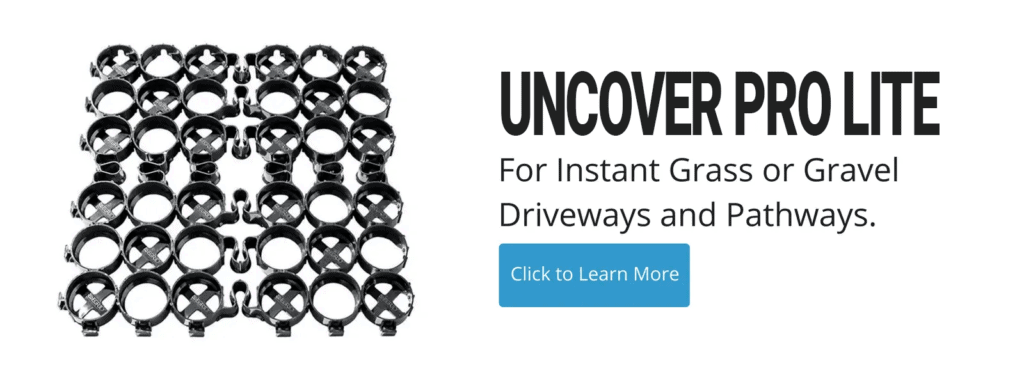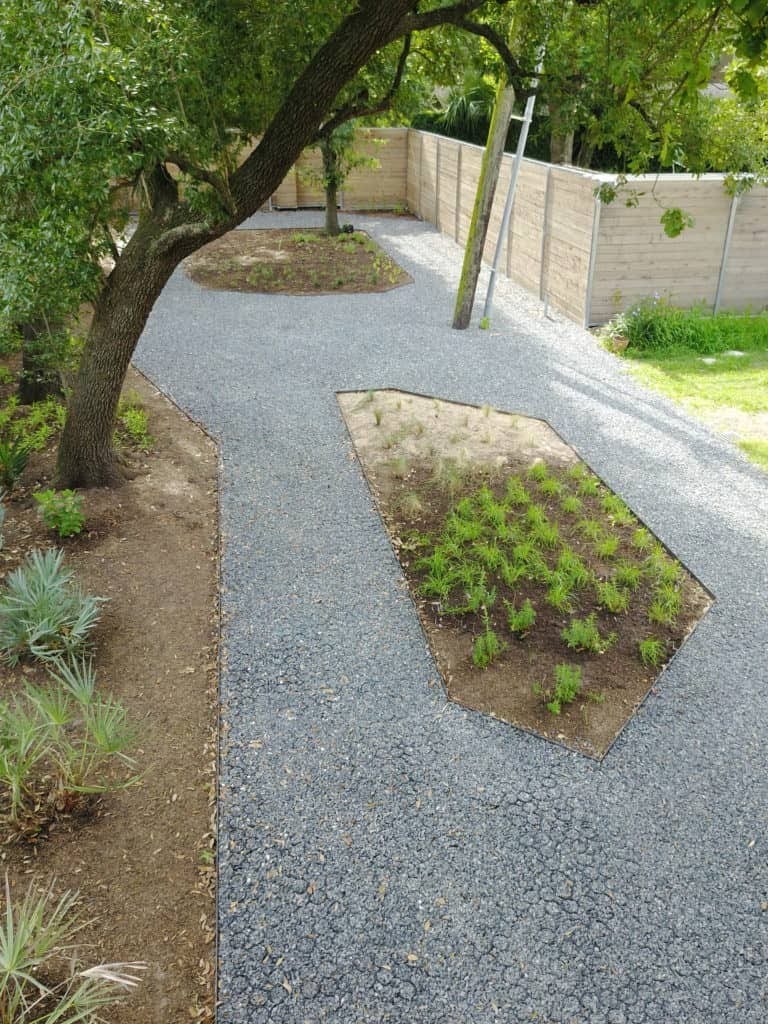
Gravel driveways and walkways have their own distinct appeal, and one of the most popular types among homeowners is pea gravel. Pea gravel is usually made up of small rocks and stones about the size of green peas, hence the name.
Pea gravel is small enough to form a solid, level surface for walking and driving, especially when used in conjunction with a stabilizer grid. The space between pieces of gravel is enough room for water and other liquids to drain through as well, making it permeable to a degree.
There’s plenty to learn about how to pack pea gravel during the installation process, as well as how to seal a pea gravel walkway, so in case you want to learn about installing a pea gravel driveway or walkway, let’s go over everything you need to know.
Preventing the Spread of Pea Gravel
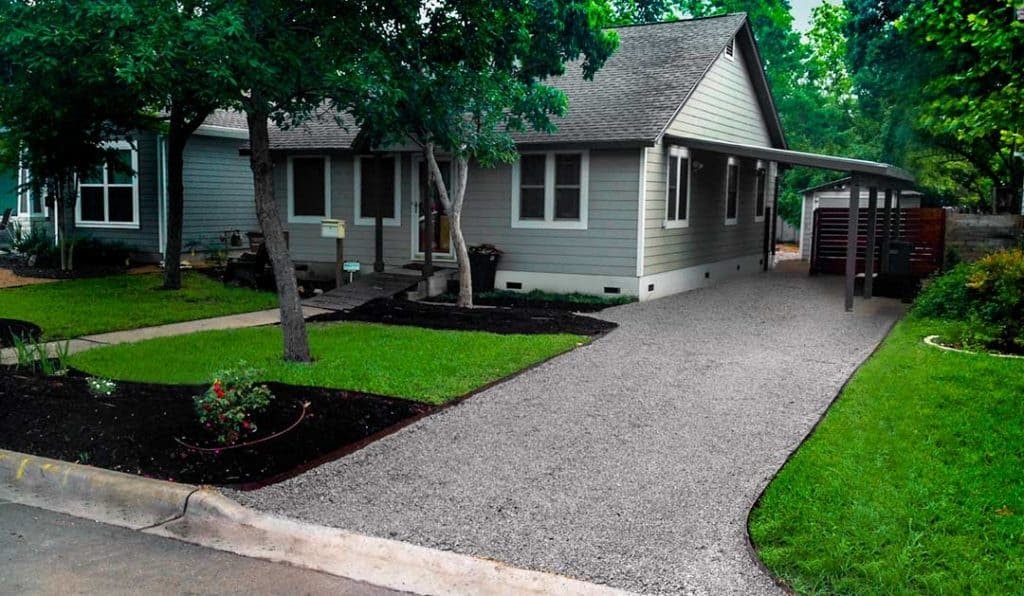
The main thing you need to know about a pea gravel driveway or walkway is how to keep the gravel in place. Pea gravel is made up of many small pieces, so it cannot be used as loose material for driveways or walkways, as it simply spreads too easily.
Thankfully, there are a number of options for how to keep pea gravel from washing away. The two most effective methods for stabilizing pea gravel are cement and permeable pavers. If you’re stabilizing pea gravel with cement, it will hold for a while until it’s eventually damaged by traffic and water exposure.
A pea gravel binding solution like cement will not be permeable and will displace water to the edges of the pavement. This can lead to erosion and even flooding, in severe cases, and if you don’t know how to seal a pea gravel driveway, you’ll have to pay someone to do it every few years or so to prevent water infiltration.
Another way to stabilize a pea gravel walkway or driveway, however, is with permeable pavers. Pavers by TRUEGRID, for instance, will hold the pea gravel in place without the use of binding agents. They are made up of empty cells which are filled with gravel and held in place by the weight of it. Installation will be quick and easy.
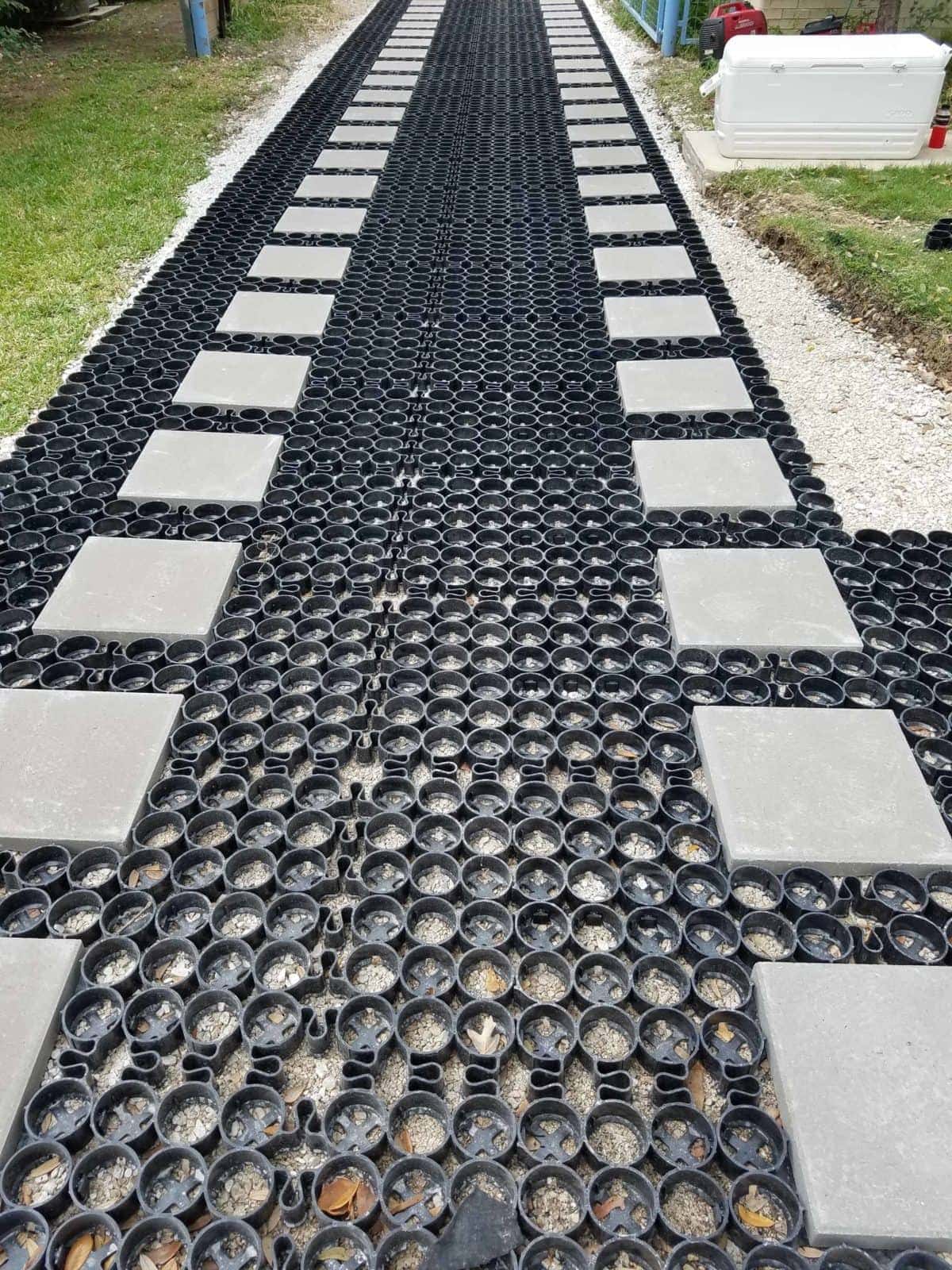
The process for how to set pea gravel into TRUEGRID pavers is simple. First, the desired paved area is excavated to a depth of about 1 inch. Next, it’s filled to the top with pea gravel and compacted. Then, the empty pavers are snapped into place over the top of the filled pit.
Afterward, the surface pavers are filled with gravel and the pea gravel is set into place by driving over it with a vehicle or heavy roller. This is the entire installation process in a nutshell, completed much faster than if you were to use concrete, and it doesn’t require any special equipment..
Using Permeable Pavers for a Higher-Quality Pea Gravel Driveway
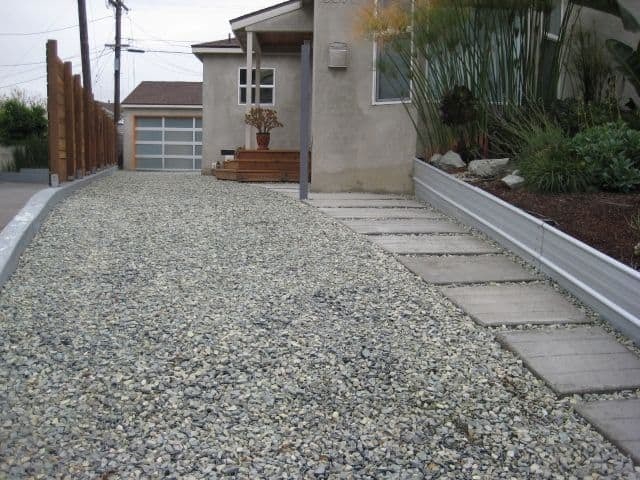
The main benefit of using permeable pavers for pea gravel walkways and driveways is their durability. TRUEGRID permeable pavers will last up to 60 years with almost no maintenance required. Compared to a cement pea gravel driveway or pathway, this will cost you thousands of dollars less over the course of its lifetime.
TRUEGRID plastic permeable pavers are also better for the environment because they’re made from 100%-recycled plastic and take far fewer resources to produce and install. They also help to accentuate the aesthetic beauty of pea gravel better than a grey or off-white cement. The cell walls are only semi-visible from the surface, allowing the pea gravel to stand out more.
With TRUEGRID permeable pavers, you will never have to worry about how to firm up pea gravel, or how to use binding agents to prevent it from spreading. You can use your pea gravel as-is, allowing the pavers to do all the work of keeping it tight and compact.
Whether you’re building a driveway for heavy usage or a basic footpath, TRUEGRID pavers provide a vastly superior level of stylistic flexibility, durability, cost-effectiveness, and eco-friendliness.
Let TRUEGRID Help You Create the Perfect Pea Gravel Driveway or Pathway
Cement is a crude and flawed solution for stabilizing pea gravel. If you really want to get the most out of this unique and versatile material, you need to stabilize it with TRUEGRID permeable pavers. Not only will you save time and money on long-term maintenance, your pavement will look cleaner and will avoid erosion and flooding problems, last longer, and provide a much more eco-friendly solution than cement.
If you’re designing a pea gravel pathway or walkway, contact a pavement professional at TRUEGRID today to help you get started.
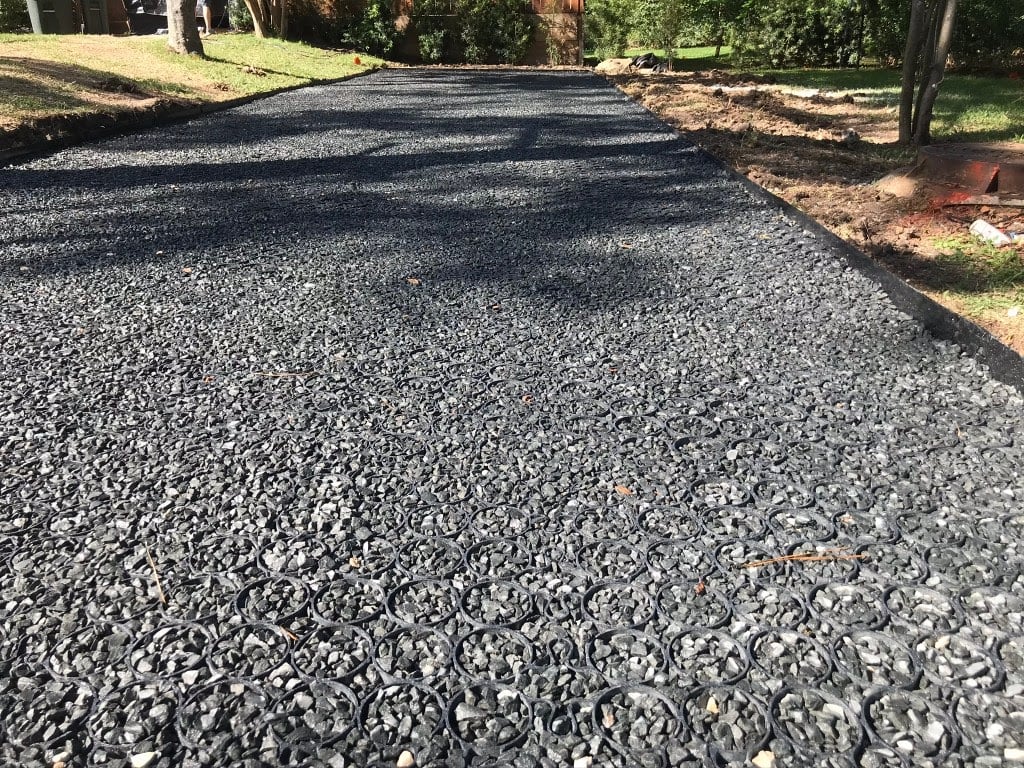
A properly installed and maintained TRUEGRID gravel driveway is durable enough to handle all types of vehicle traffic and will last up to 60 years without cracking or breaking down in the sun, rain, or other types of weather like asphalt does.. Choosing the best gravel for driveway usage is only part of the equation.
If you want to build your gravel driveway the maintenance-free way, get in touch with the pavement professionals at TRUEGRID today for a quote.
PRO LITE
